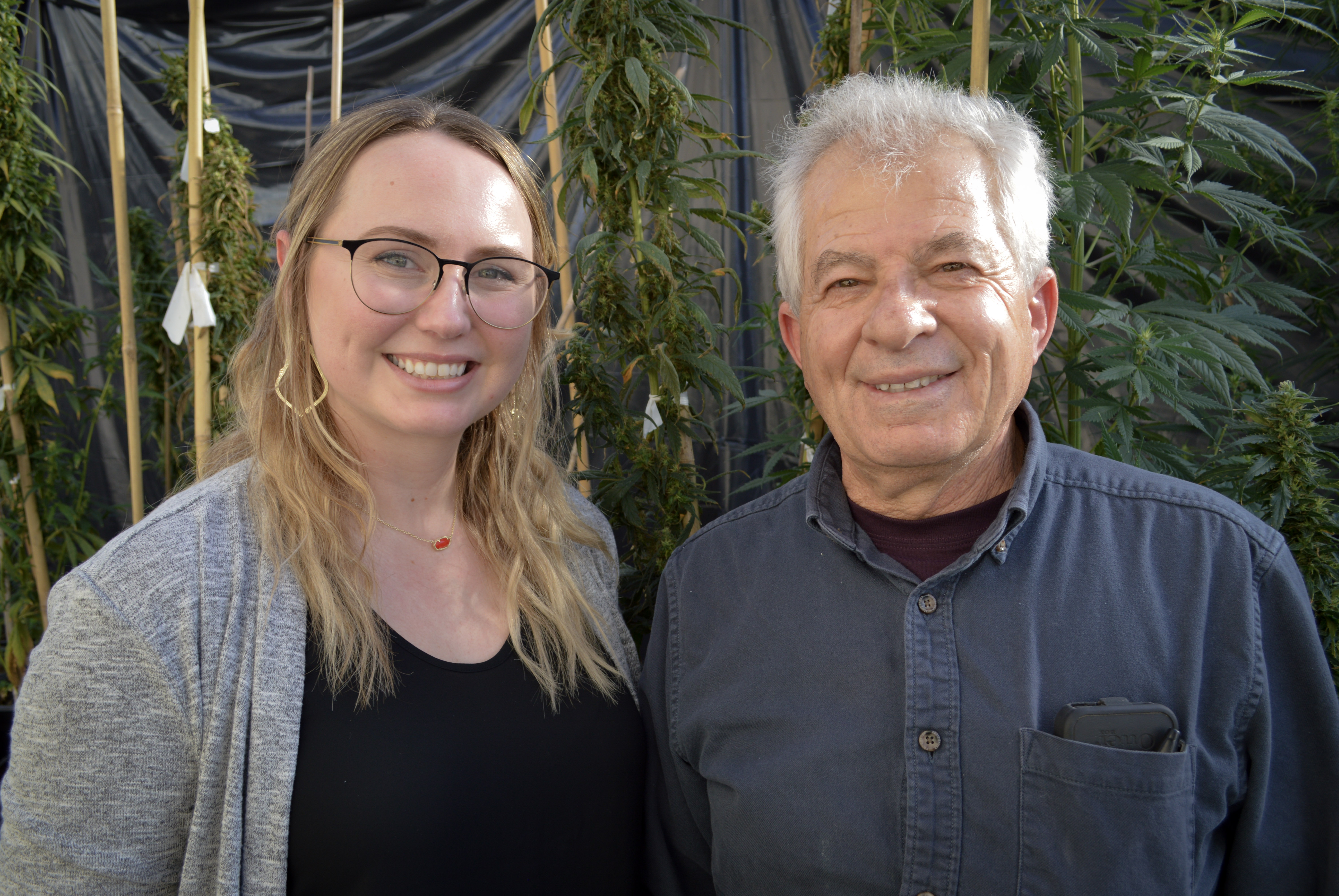
Hemp: A Plant to Light Up Nebraska’s Economy
An Investment for Nebraskan Farmers

The hemp plant has the potential to change the landscape of Nebraska’s current crop production and act as a driving force for the state’s economy. However, misconceptions about hemp may inhibit its success in Nebraska.
Both hemp and marijuana come from the same plant species, but each has a different chemical composition and the uses and restrictions of each are quite different. Education on hemp and its potential benefits can help the public overcome misconceptions. In turn, support for a hemp market in Nebraska might begin to emerge.
Researchers at the University of Nebraska–Lincoln are working on these projects.
Taylor Ruth, assistant professor in the Department of Agricultural Leadership, Education & Communication, studies the public perception of hemp with the goal of creating messages about the plant’s value. Ruth said people must first understand the crop before a market for hemp can be developed.
Ismail Dweikat, professor in the Department of Agronomy and Horticulture, develops varieties of hemp seeds that are adapted and suited for the state’s environment to ensure the hemp seed can thrive in Nebraska’s climate. Dweikat said hemp would be a suitable rotation crop for farmers across the state.
Together, this work provides a potential new avenue for farmers in the state of Nebraska.
Understanding Hemp
Hemp has distinct differences from marijuana. Dweikat said although both are a cannabis plant, hemp lacks psychotropic properties. This means that hemp does not alter the brain chemistry.
Tetrahydrocannabinol, more commonly referred to as THC, is the main psychoactive compound in marijuana that alters the brain chemistry. In marijuana, THC levels can reach 30% depending on the strain. Levels in hemp are minuscule, in comparison.
“Industrial hemp is anything that has less than 0.3% THC,” Dweikat said.
Ruth said that clarifying the difference between hemp and marijuana is an essential first step of education about the hemp plant. Misunderstandings impact the public’s perception, which causes issues with acceptance of the plant, she said.
Hemp Benefits
Hemp can be grown for various goods. To date, hemp is primarily grown for cannabidiol (CBD) or fiber. CBD is a type of natural compound found in hemp. Dweikat said CBD can be used for anxiety, pain, muscle disorders, and many other conditions. CBD can also be used in creams, oils, and even dietary supplements.
Additionally, Dweikat said a range of fiber products can be produced from hemp. The stalk of the hemp plant is divided into hurds and fiber. Hurds are the woody fibers on the interior of the stalk that can be used for paper, organic compost, animal bedding, and fiber board. The outer portion of the stalk has long, bast fibers. Dweikat said bast fiber can be used for textiles, insulation, rope, and molded plastics.
Many people likey do not know all of the uses of hemp, Ruth said. Nebraska legalized hemp production for fiber and CBD in 2019, so knowledge about the plant is still developing. Continued education about the plant is still needed.
Hemp as a Rotation Crop
Hemp used as a rotation crop not only provides the potential for an additional monetary value to farmers, but also can improve the soil for future crops.
Dweikat said farmers can benefit from the bioremediation that occurs naturally. Bioremediation is the process where hemp extracts toxins and pollutants from the soil and groundwater, thus helping clean up farmers soil.
By using hemp as a rotation crop, not only does it benefit the soil, but Dweikat said hemp also helps break insect cycles. Further, farmers who choose hemp over other optional rotation crops can benefit from the multifaceted plant by branching out to wider markets. In doing so, farmers can adjust more easily to fluctuations in various markets.
To grow hemp in Nebraska, farmers first must obtain a license from the Nebraska Department of Agriculture. Dweikat recommends that farmers start small, find a buyer for the produce, and determine which hemp crop is best to grow, based on the need for the buyer. For instance, the seed for growing hemp for fiber and growing hemp for CBD are different and the cost is different as well.
For example, Dweikat said the seed for fiber is much cheaper at $5 per pound (one pound equaling approximately 20,000-50,000 seeds) compared to the seed for CBD, which is $1 per seed.
Growing hemp for CBD also introduces unique needs outside of being a rotation crop, according to Dweikat. For instance, farmers might consider using a greenhouse to reduce the chance of wild hemp can pollinating the grown crop.
The main risk for farmers growing hemp is keeping the THC level less than 0.3%. If the plant is stressed during growing, the THC will increase. Excess heat and insect attack are two examples of stress that impact the crop. Unfortunately, Dweikat said crops that reach levels above 0.3% will be destroyed and unable to sell, Dweikat said.
The hemp industry is one of untapped potential, according to Dweikat – it awaits farmers to harness its full potential.
“Only 8% of the people in the United States use CBD, so there is potential for growth for the state of Nebraska,” Dweikat said.
For more information on hemp, visit the Nebraska Hemp Association at https://nebraskahempassociation.org/